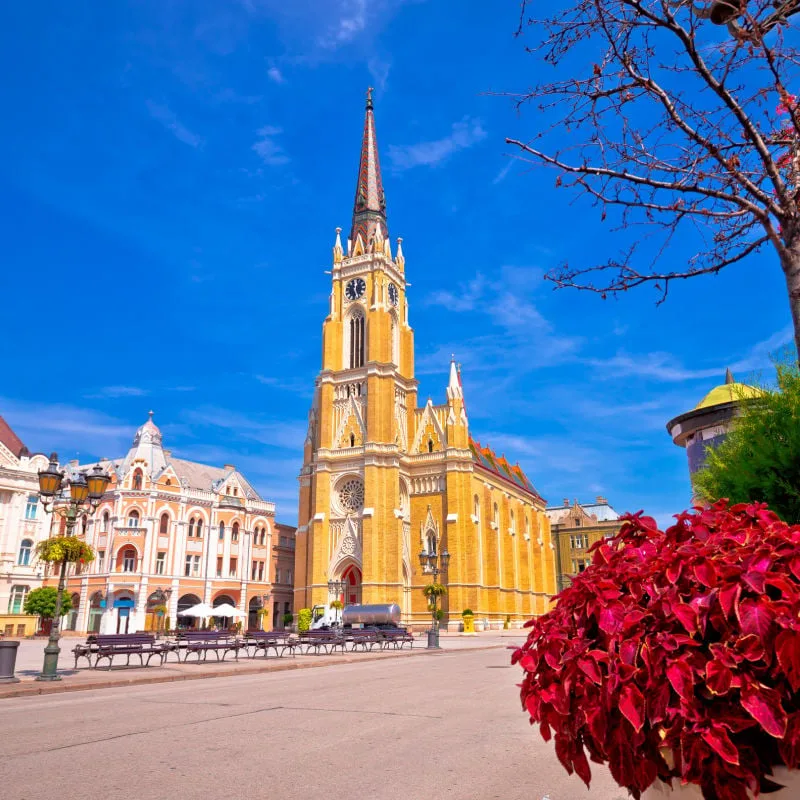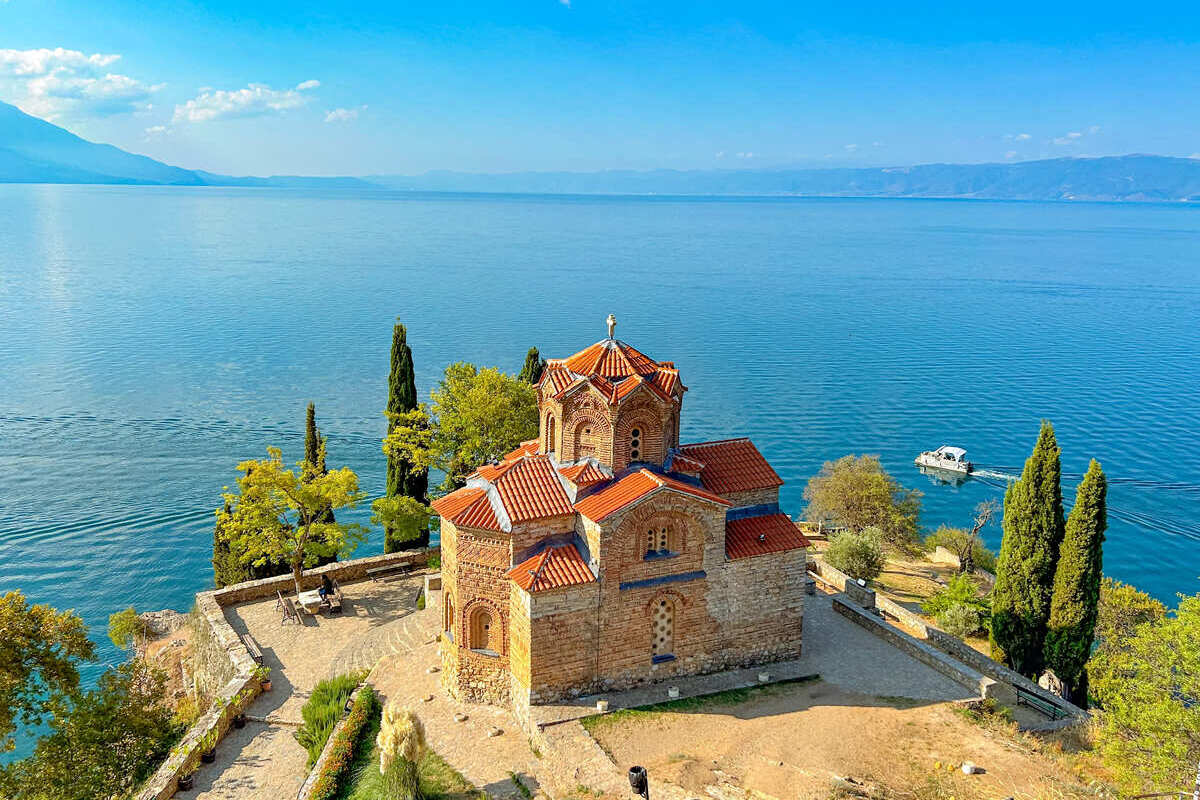Last Updated
Taking into account its cross-border connectivity, high levels of safety, cafe culture, inestimable cultural value, and more recently, the introduction of visas that allow them to stay longer, it’s no surprise digital nomads are flocking into Europe.

Despite the successful reinvention of countless countries as workcation hubs, the best European region for being a remote worker in the Old Continent remains largely undiscovered by the masses: interestingly, it is where you’ll find the cheapest prices and the easiest entry requirements.
Comprising 6 different countries in Southeastern Europe, the ‘Western Balkans’ are the next nomad hotspot, and these are 5 of the main reasons why:
What Are The Western Balkans, Even?


First, a bit of context. The Western Balkans refer to a group of small European states located in the western side of the Balkan Peninsula – if geography isn’t your forte, picture them across the Adriatic Sea from Italy, north of Greece, and west of Türkiye.
They are predominantly South Slavic in character (though there are clear Greek and Turkish influences), they share similar cultural traits and an intertwined History, and none has yet managed to enter the European Union – the end goal for (nearly) every European country.
According to the European Commission, these are the five Western Balkan countries:
- Albania
- Bosnia-Herzegovina
- North Macedonia
- Montenegro
- Kosovo*
- Serbia
*Partially-recognized country still considered by some UN members as part of Serbia
Now that we’ve established what the Western Balkans are, let’s establish why they’re great alternatives for nomads to escape overcrowded, overpriced Croatia, Italy, Greece and the like.
It Is Cheaper Than Most Of Europe


For starters, the Western Balkans are the cheapest sub-region in all of Europe, cheaper even than Central-Eastern European states traditionally considered budget destinations like the Czech Republic, Hungary, and Poland.
Below, you will find the average cost of living per month, in U.S. dollars, for every Western Balkan country, as assessed by Nomad List:
- Albania ($1,248 to $1,972)
- Bosnia-Herzegovina ($1,091 to $2,103)
- North Macedonia ($872 to $1,389)
- Montenegro ($1,244 to $2,166)
- Kosovo ($1,053 to $1,810)
- Serbia ($1,312 to $2,070)


You may be wondering why Western Balkan countries are so cheap – your total monthly expenses are likely to be lower than the average rent in other European countries or the U.S. – and the answer is, these countries have less robust welfare state, lower wages, and thus lower prices.
In Albania, for instance, the minimum wage is set at $227, or the equivalent in Albanian lek, so you can expect prices in restaurants and shops to reflect the lower purchasing power of the local populace; in Serbia, renting a flat in the capital can cost as cheap as $477.52 monthly.
Additionally, none of these countries are officially in the Eurozone*, and with two exceptions, they have their own national currencies that, when compared to the U.S. dollar, are a lot weaker: in North Macedonia, one dollar will buy you 57.83 denar.
*Montenegro and Kosovo do use the euro as the de facto currency without approval of European institutions, as they are yet to be offered access to the European Union.
You Just Can’t Beat That Off-Path Appeal


Aside from being affordable by European standards, the Western Balkans have that irresistible off-path factor:
Due to their omnipresence in the travel community, we all know what to expect of cities like Paris, London, Rome and Venice, and nearly every traveler will likely have been to those at least once, but very few have explored this part of the world.
Did you know that Albania, just like Greece, straddles the Mediterranean Sea, and it even has Maldives-like beaches of sugar-white sands? Or that Montenegro serves as an extension of Croatia’s Dalmatian Coast, littered with picturesque harborside towns and rugged preserves?


Maybe you should also know that Belgrade in Serbia, or as we like to call it, Paris of the Balkans, is equally dominated by grandiose buildings, and that North Macedonia is home to Ohrid, where Europe’s postcard view of an Orthodox church sitting on the shores of a crystalline lake is found.
Don’t get us started on Bosnia-Herzegovina, with its abundant nature, cascading waterfalls, and centuries-old bridges, or tiny Kosovo, where great hikes across a verdant landscape and ancient monasteries await: the Western Balkans are truly an endless source of fascination.


Some of the main landmarks to be ticked off in the region are:
- Tirana, the youthful capital of Albania, for its quirky cafes and modernist architecture
- Berat, a well-maintained, UNESCO-listed Ottoman-era town in the Albanian hinterland
- Ksamil, a laid-back beach town in Albania bounded by teal-colored waters
- Butrint, a 2,000-year-old ruined city in Albania still housing a preserved Greek theater
- Stari Most, a historic bridge in the Bosnian city of Mostar, arching over the turquoise Neretva River
- Ohrid, a sleepy town on the shores of a lake in N. Macedonia known for its rich Byzantine heritage


- Skopje, the N. Macedonian capital, featuring a hilltop fortress and a gawking 284 statues
- Kotor, a walled city and Dubrovnik dupe resting on the innermost tip of a bay in Montenegro
- Budva, a quaint Montenegrin leisure town lining the Adriatic Sea and dating back centuries
- Bar, the liveliest resort city in Montenegro, famous for its sandy Sutormore beach
- Prizren, a charming medieval city in Kosovo and an underrated foodie hotspot
- Belgrade, the Serbian capital, boasting a scenic riverfront and a thriving nightlife
- Novi Sad, a cultural hub of the first order in Serbia, with an imposing Neo-Gothic cathedral and riverside fortress


The Most Hospitable Locals
Culture and affordability aside, the Western Balkans are just as known for the hospitality of locals: unlike other overtouristed parts of Europe – i.e. the Mediterranean South, the Paris-Brussels-Amsterdam trio, and parts of Germany – it typically receives very few guests.
This means that, if you’re the new foreigner in town, chances are (some) locals will be genuinely curious about getting to know you, and if you befriend them, even invite you for rounds of rakija back at their family home.


Our point is, Balkan people may come across as blunt at times (blame it on their harsh upbringing) but contrary to some of their French, and Italian counterparts, they are rarely hostile towards Americans, and they will go out of their way to help you if needed.
Out of the five Western Balkan countries, the friendliest people we’ve come across were the Albanians (included here are the Albanians of Kosovo and North Macedonia) – you can find out why they’re so hospitable to visitors here.
The Western Balkans Are Very Safe


Forget all your misconceptions regarding safety in Eastern Europe: yes, there is a war raging on between two countries – namely Russia and Ukraine – but (most) other states in the vicinity are protected from the conflict, either due to their NATO status, or just neutrality.
On the violence front, crime rates are incredibly low, too, across all five Western Balkan states, which are all deemed by U.S. authorities, without exception, as either very low risk or low-risk; in other words, pickpocketing is truly your biggest concern here.


Now, there is some animosity in parts of the Balkans, most notably between Serbia and Kosovo, which are yet to come to a consensus regarding the latter’s proclamation of independence from Serbia in 2007, so you’re advised to avoid visiting that particular border due to ethnic tensions.
Excluding the Kosovo-Serbian border, this European region is perfectly safe for digital nomads, as long as they take regular precautions, like avoiding deserted. poorly-lit areas of larger cities at night, not leaving personal items on tabletops when dining alfresco, and beware of petty theft in crowds.
None Of That Schengen Mess


There are still some major downsides affecting the nomad community living in Europe, one of them being the fact that most countries belong to the Schengen Area.
We’ve covered that in depth here, but in sum, this border-free zone does not exactly allow nomads to stay for long at all – more specifically, they only get 90 days to travel across 29 different countries – which can be an impediment to long-term stays.
In other words, once you’ve spent 60 days in Croatia, you’ll then only have 30 to explore Italy until you have to leave for another three months; similarly, spending 90 continuous days in France, you can’t be present in any other Schengen country until a further 90 days have elapsed.


Fortunately the odd country-hopper, no country in the Western Balkans applies Schengen Area rules, meaning you can stay in Europe longer by exploring this underrated corner of the world instead, as time spent in Schengen does not impact your allowed length of stay in them.
This is how long you can stay in each destination as a digital nomad, irrespective of previous Schengen visits:
- Albania (90 days for non-Americans, or 1 year for U.S. passport holders)
- Bosnia-Herzegovina (90 days)
- North Macedonia (90 days)
- Montenegro (90 days)
- Kosovo (90 days)
- Serbia (90 days)
Learn more about the Western Balkans – and start planning your next multi-destination sojourn in Europe – here.


SUBSCRIBE TO OUR LATEST POSTS
Enter your email address to subscribe to Travel Off Path’s latest breaking travel news, straight to your inbox.
This article originally appeared on TravelOffPath.com
Opinions expressed here are the author’s alone, not those of any bank, credit card issuer, hotel, airline, or other entity. This content has not been reviewed, approved or otherwise endorsed by any of the entities included within the post.




